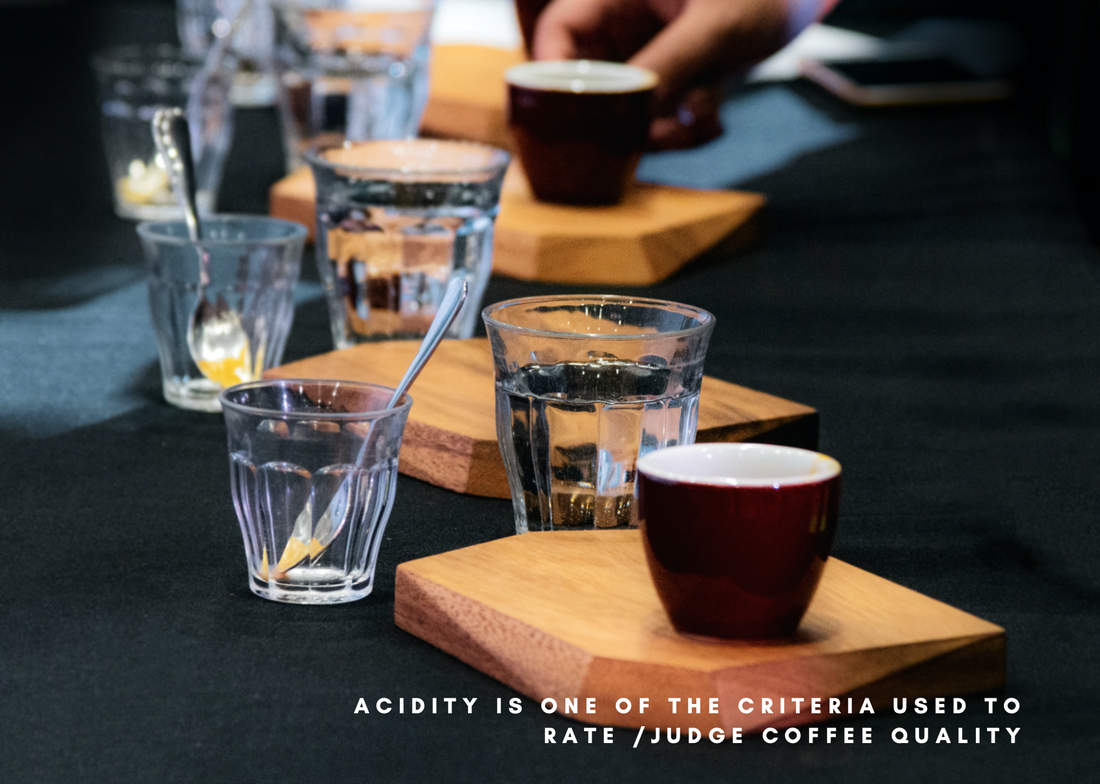
What is Acidity when it comes to coffee
Share
Acidity in coffee is not a bad thing, it is in fact a desirable quality and some of the highest scoring coffees in the world have a sprightly lining of acidity in them. The word ‘acidity' in India unfortunately gets a lot of bad press. In most cases, when one thinks of acidity, there are associations with greasy, spicy food, antacids and curd rice.

Often we encounter customers who ask us to a recommend a coffee that 'does not have acidity’. What they (don’t know they) are saying is ‘I’d like you to recommend a coffee that does not have notes of pear, or apple thanks to malic acid. No aromas of mango or any stone fruit. No flavour of Musumbi or grapefruit or any other notes that are brought about because of citric acid, phosphoric acid, tartaric acid etc.’.
To understand what you are missing when you don’t want to taste acidity in a coffee, it would make sense to understand the different kinds of acids that could be present in coffee, and what each of these means from a flavour point of view.
Chlorogenic Acid.
This is an acid that is quite prominent at the green bean stage and is proportionately higher in Robusta than in Arabica coffee beans. Chlorogenic Acid is responsible for the ‘brightness’ of a cup (of coffee) in it’s earlier stages of roasting - light, medium. Chlorogenic Acid is also present in wine.
Malic Acid.
If you can taste notes of apple or pear in your coffee, it’s because of the presence of malic acid. Other notes include stone fruit such as cherries, peaches, Ooty plums etc. Malic Acid in coffee is formed by a metabolic process within the cell, and roasting technique has a role to play in it.

Citric Acid.
One of the more commonly known acids, the presence of citric acid in the coffee bean brings about notes of citrus fruit which could range from sour lime to fruitier lemons, musumbi, and certain kinds of oranges. Citric acid is produced in the cultivation stage of coffee, and it’s presence reduces as the roast progresses.

Quinic Acid.
One of the not so nice popular acids that are present in coffee, but mostly in darker-roasted coffee beans. Quinic acid can lend a rich coffee flavour to coffee, but could also be responsible for acidity in the stomach. Like the clinical kind. When people complain about unpleasant acidity when they consume some or a lot of coffee, in most cases it’s because of an oily roast, or worse still fairly dark roast coffee that has been kept for a while.
Phosphoric Acid.
While the would ‘phosphorus’ sounds a little intimidating, phosphoric acid actually has a sweeter taste as compared to the others. Mango, Grapefruit, ripe Jackfruit, nectar tangerines etc. are notes that present themselves in a cup of coffee thanks to phosphoric acid.

Acetic Acid.
Again, a very familiar acid that’s most commonly associated with vinegar. But like most organic vinegar that’s made by ‘over fermenting’ some fruit or the other, a high presence of acetic acid in coffee could indicate bad processing at the farm. Small amounts of acetic acid however, are pleasant, fruity and provide a nice firm balance in a cup.
Experience first hand these different flavourful acids in coffee by brewing one of these roasts from Maverick & Farmer - Sattva, Say Hello to Mellow, Rohan Bopanna Masterblend.
Acidity in coffee provides some complexity in the cup. However not all acidity in coffee is good. Because of bad bean quality or bad processing or very commonly, bad roasting, sometimes acidity can get very uni-dimensional and unpleasant. Plain notes of nimboo or bitter lime aren’t pleasant by any means. A good way to explain acidity is by drawing a parallel with lime extract and sugar-water. If you were to sip a teaspoon of plain squeezed lime it would leave your mouth puckering with an unbearable sourness. On the other hand if you were to taste a teaspoon of sugar syrup, you’d find nothing exciting there but some uni-dimensional sweetness. But when you mix the two, you experience a nice, pleasant fruity, refreshing acidity. And that is exactly what quality acidity means when it comes to coffee.
